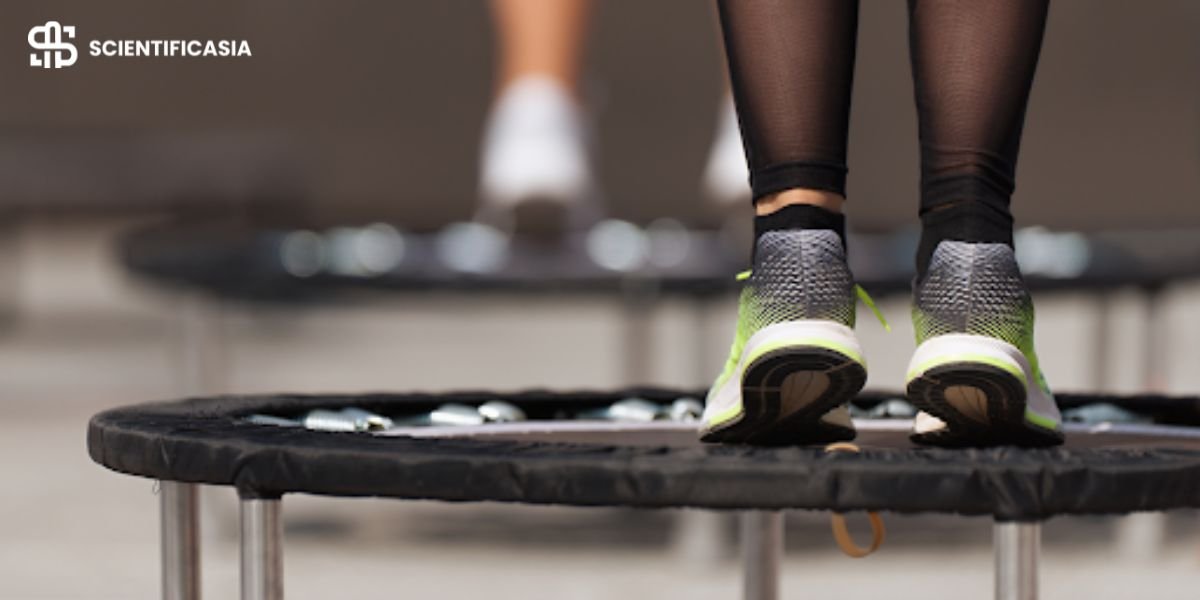Living in a small space doesn’t mean your fitness goals have to take a back seat. Whether you’re in a studio apartment or just short on room, there are smart workout tools that fit your space and protect your joints. You don’t need bulky machines or a home gym to stay active.
Today’s fitness gear is designed to be compact, easy to store, and gentle on your body. From low-impact equipment to clever foldable designs, these tools make it easy to stay consistent with your workouts, no matter your square footage or joint concerns. Let’s explore the best options.
Why Small-Space Fitness Matters More Than Ever
These days, living in a small space is more common than ever. Whether you’re in a city apartment, downsizing, or just don’t have room for bulky gym gear, staying active can feel like a challenge. But it doesn’t have to be. Fitness tools are proving that you don’t need a ton of space to get a solid, joint-friendly workout right at home.
One standout option is a mini trampoline for adults, which offers a fun and efficient way to boost cardiovascular health without stressing the joints. Its compact design makes it perfect for apartments or home gyms with limited room, and the gentle bouncing motion supports better balance, coordination, and core strength.
The Space Challenge
When every square foot counts, big machines like treadmills or weight benches can feel impossible to fit in. If you’re working with just a few hundred square feet, choosing what gets floor space becomes a real puzzle. Home workout gear has come a long way. These days, you can find compact tools that offer the same benefits as full-size equipment without taking over your living room.
And when it comes to small spaces, storage is everything. Foldable gear, stackable accessories, and wall-mounted options make it easy to turn any room into a workout zone, then pack it all away when you’re done. No gym? No problem.
Joint Health in Confined Spaces
Interestingly, limited space can lead to better joint care. Smaller areas naturally push you toward low-impact workouts that are easier on your knees, hips, and back. That means you’re more likely to develop gentle, consistent habits that won’t leave you sore or injured.
Plus, when space is tight, you’re forced to focus on form and control. There’s just no room for flailing or fast, sloppy movements. This slower, more mindful approach can improve your results and help you stay injury-free over the long run.
Essential Compact Equipment for Joint-Friendly Workouts
The key to successful small-space fitness lies in choosing versatile equipment that serves multiple purposes while being gentle on your body. These tools have been carefully selected for their ability to provide effective workouts without overwhelming your living space.
1. Trampolines That Fit Anywhere
A mini trampoline for adults might sound like a throwback to childhood, but these devices have become serious fitness tools for people with joint concerns. They provide exceptional cardiovascular benefits while absorbing impact that would otherwise stress your knees and ankles. Most models fold in half or have removable legs, making storage surprisingly manageable.
The gentle bouncing motion stimulates lymphatic drainage and improves balance while giving you a solid cardio workout. You can use them for everything from light bouncing while watching TV to high-intensity interval training sessions.
2. Resistance Bands and Suspension Systems
Joint-friendly fitness equipment doesn’t get much more versatile than resistance bands. They take up about as much space as a pair of socks but can provide strength training for every muscle group. The variable resistance they offer is gentler on joints than traditional weights since the resistance increases gradually through your range of motion.
Suspension trainers function similarly, anchoring to doors or walls and using your body weight for resistance. They’re especially effective for improving functional strength and stability, which becomes increasingly important as we age.
3. Adjustable Dumbbells and Kettlebells
Modern adjustable weights have solved the space problem that once made strength training impossible in small homes. A single set of adjustable dumbbells can replace an entire weight rack, and they’re much easier on your joints than machines that lock you into fixed movement patterns.
These tools excel at creating a home gym for small space setups that work. You can perform compound movements that work multiple muscle groups while maintaining the natural movement patterns your joints prefer.
Creating Your Perfect Small-Space Workout Setup
Building an effective fitness routine in a small space requires strategic thinking about equipment placement, storage, and workflow. The goal is to create a system that’s so convenient you’ll use it regularly.
4. Maximizing Vertical Space
Wall-mounted equipment represents the future of small-space fitness. Pull-up bars, resistance band anchors, and fold-down workout benches can transform almost any wall into a functional fitness station. This setup keeps your floor space clear while still offering serious workout options.
Consider installing a few heavy-duty hooks or a small shelving system dedicated to fitness gear. Having a designated spot for everything makes setup and cleanup much faster, which removes one of the biggest barriers to consistent exercise.
5. Multi-Purpose Equipment Selection
The most successful small-space gyms feature equipment that serves multiple functions. A stability ball works for core training, stretching, and can even substitute for a bench during some exercises. Foam rollers help with recovery but also work for balance challenges and core training.
Low-impact exercise equipment typically falls into this multi-purpose category naturally. Items like yoga mats, resistance bands, and balance boards can be used for strength training, flexibility work, and injury prevention. This versatility makes them perfect investments for space-conscious fitness enthusiasts.
6. Storage Solutions That Work
Smart storage can make or break your small-space gym. Equipment that doesn’t have a clear, convenient home tends to pile up in corners or get shoved under beds where it’s forgotten. Rolling carts, wall-mounted organizers, and under-bed storage boxes all help keep your gear accessible but out of the way.
The key is making your storage solution part of your workout routine. If putting equipment away takes more than two minutes, you’re less likely to maintain the habit long-term.
This foundation sets us up to explore specific workout strategies for pain relief that work best in confined spaces.
Effective Workout Strategies for Small Spaces
Working out in a small space requires different approaches than traditional gym routines. The limitations can become advantages once you understand how to work with them rather than against them.
7. Circuit Training Advantages
Small spaces naturally lend themselves to circuit training, where you move quickly between different exercises with minimal rest. This approach maximizes your workout efficiency while keeping your heart rate elevated throughout the session. You can easily set up 4-5 exercise stations in a 6×8-foot area.
The constant movement also helps prevent the boredom that sometimes comes with repetitive exercises. Your body doesn’t have time to adapt to any single movement pattern, which can lead to better overall fitness improvements.
8. Bodyweight Movement Mastery
Learning to use your body weight effectively becomes crucial when space is limited. Push-ups, squats, lunges, and planks require no equipment and can be modified for any fitness level. These exercises also tend to be more joint-friendly than their machine-based counterparts.
The progression possibilities with bodyweight exercises are virtually unlimited. You can start with wall push-ups and eventually work up to single-arm variations, providing years of challenge without needing additional equipment.
9. Recovery and Flexibility Integration
Small spaces encourage better recovery habits since you’re more likely to stretch and foam roll when the equipment is right there. This integration of recovery work into your routine pays huge dividends for joint health and overall fitness progress.
Setting aside just 10-15 minutes after each workout for gentle stretching or foam rolling can prevent many of the aches and pains that come from regular exercise. The convenience of doing this in your own space makes it much more likely to happen consistently.
Conclusion
Creating an effective workout routine in a small space isn’t about compromising on results; it’s about being smart with your choices. The tools and strategies we’ve covered can provide everything you need for a comprehensive fitness program that respects both your space limitations and your joints.
Remember, the best workout is the one you’ll do consistently, and removing barriers like commute time and equipment setup makes that much more likely to happen. Your small space might just become your secret weapon for long-term fitness success.
Common Questions About Small-Space Fitness
How to exercise at home in a small space?
Focus on bodyweight exercises like mountain climbers, wall squats, tricep dips, inclined push-ups, planks, and burpees. These movements require minimal space while providing effective full-body workouts that you can do anywhere.
What equipment is best for apartment workouts?
Resistance bands, adjustable dumbbells, yoga mats, and suspension trainers offer maximum versatility with minimal storage requirements. These tools can provide complete workouts without disturbing neighbors or requiring dedicated space.
Can small-space workouts be as effective as gym workouts?
Absolutely. Research shows that consistency matters more than equipment variety. Small-space workouts often lead to better adherence since there are fewer barriers to getting started, ultimately producing better long-term results.











